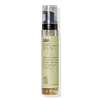What's inside
What's inside
 Key Ingredients
Key Ingredients

 Benefits
Benefits

 Concerns
Concerns

 Ingredients Side-by-side
Ingredients Side-by-side

Water
Skin ConditioningHydroxypropyltrimonium Hydrolyzed Corn Starch
Cocamidopropyl Betaine
CleansingPvp
Emulsion StabilisingDecyl Glucoside
CleansingPolyglyceryl-6 Caprylate
EmulsifyingGlycerin
HumectantPolyglyceryl-4 Caprate
EmulsifyingGluconolactone
Skin ConditioningPolysorbate 20
EmulsifyingLactic Acid
BufferingPolyquaternium-70
Tetrasodium Glutamate Diacetate
Citrus Aurantium Dulcis Peel Oil
MaskingSodium Benzoate
MaskingCitrus Reticulata Peel Oil
MaskingDipropylene Glycol
HumectantLimonene
PerfumingCitric Acid
BufferingCitrus Limon Peel Extract
EmollientMalic Acid
BufferingSaccharum Officinarum Extract
MoisturisingCalcium Gluconate
HumectantArnica Montana Flower Extract
MaskingLinum Usitatissimum Seed Extract
PerfumingOlea Europaea Leaf Extract
PerfumingPanicum Miliaceum Seed Extract
Skin ConditioningPrunus Amygdalus Dulcis Seed Extract
Skin ConditioningRosmarinus Officinalis Leaf Extract
AntimicrobialTilia Tomentosa Bud Extract
Skin ConditioningLinalool
PerfumingWater, Hydroxypropyltrimonium Hydrolyzed Corn Starch, Cocamidopropyl Betaine, Pvp, Decyl Glucoside, Polyglyceryl-6 Caprylate, Glycerin, Polyglyceryl-4 Caprate, Gluconolactone, Polysorbate 20, Lactic Acid, Polyquaternium-70, Tetrasodium Glutamate Diacetate, Citrus Aurantium Dulcis Peel Oil, Sodium Benzoate, Citrus Reticulata Peel Oil, Dipropylene Glycol, Limonene, Citric Acid, Citrus Limon Peel Extract, Malic Acid, Saccharum Officinarum Extract, Calcium Gluconate, Arnica Montana Flower Extract, Linum Usitatissimum Seed Extract, Olea Europaea Leaf Extract, Panicum Miliaceum Seed Extract, Prunus Amygdalus Dulcis Seed Extract, Rosmarinus Officinalis Leaf Extract, Tilia Tomentosa Bud Extract, Linalool
Water
Skin ConditioningAlcohol Denat.
AntimicrobialPropylene Glycol
HumectantPolyurethane-48
PEG-60 Hydrogenated Castor Oil
EmulsifyingSodium Benzoate
MaskingCetyl Ethylhexanoate
EmollientBis-Isobutyl PEG/PPG-20/35/Amodimethicone Copolymer
Lactic Acid
BufferingPolysorbate 80
EmulsifyingButylene Glycol
HumectantGluconolactone
Skin ConditioningHydrolyzed Keratin
HumectantLinalool
PerfumingMethyl Benzoate
Perfuming
 Reviews
Reviews

Ingredients Explained
These ingredients are found in both products.
Ingredients higher up in an ingredient list are typically present in a larger amount.
Gluconolactone is a PHA. PHAs are a great gentle alternative to traditional AHAs.
When applied, Gluconolactone has the same affect on skin as AHAs such as lactic acid. It helps dissolve the dead skin cells in the top layer of your skin. This improves texture and brightens the skin.
PHAs are more gentle than AHAs due to their larger structure. They do not penetrate as deeply as AHAs and take a longer time to dissolve dead cells. Studies show PHAs do not cause as much irritation.
Gluconolactone has some interesting properties:
In a 2004 study, Gluconolactone was found to prevent UV damage in mouse skin cells and has not been found to increase sun sensitivity. However, we still recommend wearing SPF daily.
This ingredient is is an created by reacting gluconic acid with an alcohol.
Learn more about GluconolactoneLactic Acid is another well-loved alpha hydroxy acid (AHA). It is gentler than glycolic acid but still highly effective.
Its main role is to exfoliate the surface of the skin by loosening the “glue” that holds dead skin cells together. Shedding those old cells leads to smoother, softer, and more even-toned skin.
Because lactic acid molecules are larger than glycolic acid, they don’t penetrate as deeply. This means they’re less likely to sting or irritate, making it a great choice for beginners or those with sensitive skin.
Like glycolic acid, it can:
Lactic acid also acts as a humectant (like hyaluronic acid). It can draw water into the skin to improve hydration and also plays a role in the skin's natural moisturizing factor (NMF) in the form of sodium lactate.
Studies show it can boost ceramide production to strengthen the skin barrier and even help balance the skin’s microbiome.
To get results, choose products with a pH between 3-4.
Lower strengths (5-12%) focus on surface exfoliation; higher strengths (12% and up) can reach deeper in the dermis (deeper, supportive layer) to improve skin texture and firmness over time.
Though it was originally derived from milk, most modern lactic acid used in skincare is vegan. It is made through non-dairy fermentation to create a bio-identical and stable form suitable for all formulations.
When lactic acid shows up near the end of an ingredient list, it usually means the brand added just a tiny amount to adjust the product’s pH.
Legend has it that Cleopatra used to bathe in sour milk to help reduce wrinkles.
Lactic acid is truly a gentle multitasker: it exfoliates, hydrates, strengthens, and brightens. It's a great ingredient for giving your skin a smooth, glowing, and healthy look without the harshness of stronger acids.
Read more about some other popular AHA's here:
Learn more about Lactic AcidLinalool is a fragrance and helps add scent to products. It's derived from common plants such as cinnamon, mint, citrus, and lavender.
Like Limonene, this ingredient oxidizes when exposed to air. Oxidized linalool can cause allergies and skin sensitivity.
This ingredient has a scent that is floral, spicy tropical, and citrus-like.
Learn more about LinaloolSodium Benzoate is a preservative. It's used in both cosmetic and food products to inhibit the growth of mold and bacteria. It is typically produced synthetically.
Both the US FDA and EU Health Committee have approved the use of sodium benzoate. In the US, levels of 0.1% (of the total product) are allowed.
Sodium benzoate works as a preservative by inhibiting the growth of bacteria inside of cells. It prevents the cell from fermenting a type of sugar using an enzyme called phosphofructokinase.
It is the salt of benzoic acid. Foods containing sodium benzoate include soda, salad dressings, condiments, fruit juices, wines, and snack foods.
Studies for using ascorbic acid and sodium benzoate in cosmetics are lacking, especially in skincare routines with multiple steps.
We always recommend speaking with a professional, such as a dermatologist, if you have any concerns.
Learn more about Sodium BenzoateWater. It's the most common cosmetic ingredient of all. You'll usually see it at the top of ingredient lists, meaning that it makes up the largest part of the product.
So why is it so popular? Water most often acts as a solvent - this means that it helps dissolve other ingredients into the formulation.
You'll also recognize water as that liquid we all need to stay alive. If you see this, drink a glass of water. Stay hydrated!
Learn more about Water